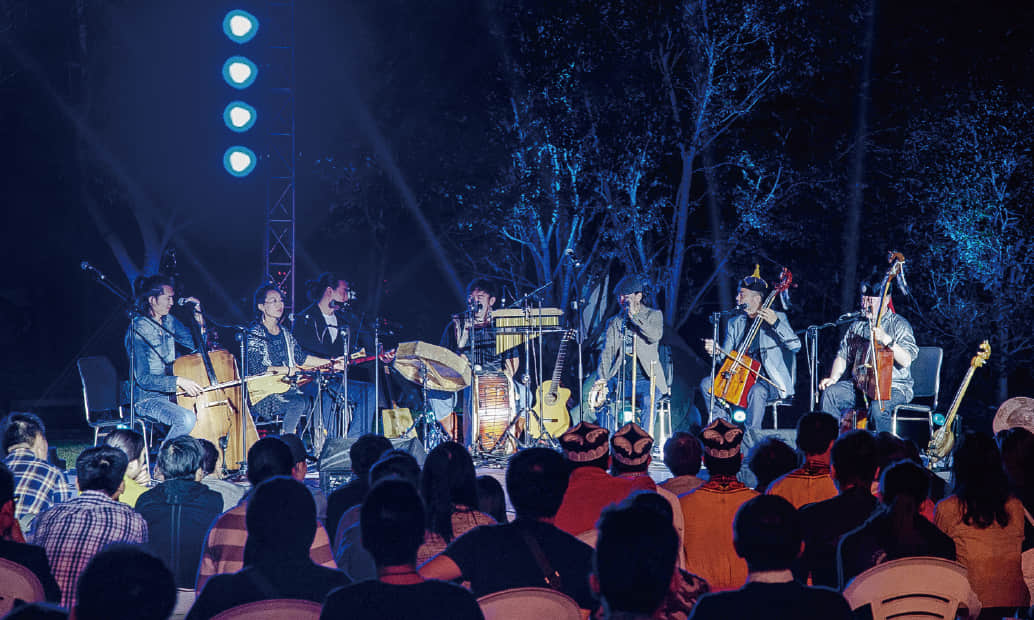Sinfonia Concertante for Anda Union and Orchestra - The Last of the SteppesOct.19th,2014 BIG GRASSFIELD FRONT OF RED BUILDING
In nine movements, The Last of the Steppes depicts the past, present, and future of the lnner Mongolian grasslands. The past is the nomadic life of Mongols, a culture built on relationships with domesticated animals as well as with wildlife: wolfs, eagles, gazelles, and more. The present is about the loss of the steppes; the human transition from protecting to threatening the grasslands through mining, agriculture, and urban development, leading to habitat destruction, desertification, and air pollution in the region, as well as a plea to "go home," a place strictly of the past. The future is uncertain. lt might be dystopian and devoid of anda, the Mongolian word for brotherhood and compassion, or it might be a chance for grasslands' rebirth; the people who preserve the steppes today, then, are the heroes of tomorrow.

Sam Wu
Sam Wu's music deals with the beauty in blurred boundaries. Many of his works center around extra-musical themes: architecture and urban planning, climate science and the search for exoplanets that host life. Selected for the American Composers Orchestra's EarShot readings, winner of an ASCAP Morton Gould Young Composer Award, Sam was also awarded First Prize at the Washington International Competition. Sam’s collaborations span five continents, most notably with the Philadelphia, Minnesota, and Sarasota Orchestras, the Melbourne and Tasmanian Symphonies, New York City Ballet, Sydney International Piano Competition, the Lontano, Parker, Argus, ETHEL and icarus Quartets, conductors Osmo Vänskä, Case Scaglione, and Benjamin Northey, and sheng virtuoso Wu Wei. After growing up in Shanghai, Sam (b. 1995) received degrees from Harvard University and The Juilliard School, and is a DMA candidate in Composition at Rice University's Shepherd School of Music. His teachers include Tan Dun, Anthony Brandt, Pierre Jalbert, and Chaya Czernowin.
Anda Union
"Anda" in Mongolian mean sworn brothers. Anda Union Mongolian Ensemble was established in 2003. The 10members of the team are all from Aru Khorchin in Xilingol prairie, with an average age of less than 30. As the only domestic professional art groups of perfect combination of horse-headed fiddle, the Khomus and Humai singing, they won the first place of grand prix in aboriginal group in authority singing competition in 2006, the 12th CCTV young singer competition, and got fame since then. Anda Union Mongolian Ensemble is one of the most popular Chinese band in number of foreign tours.
